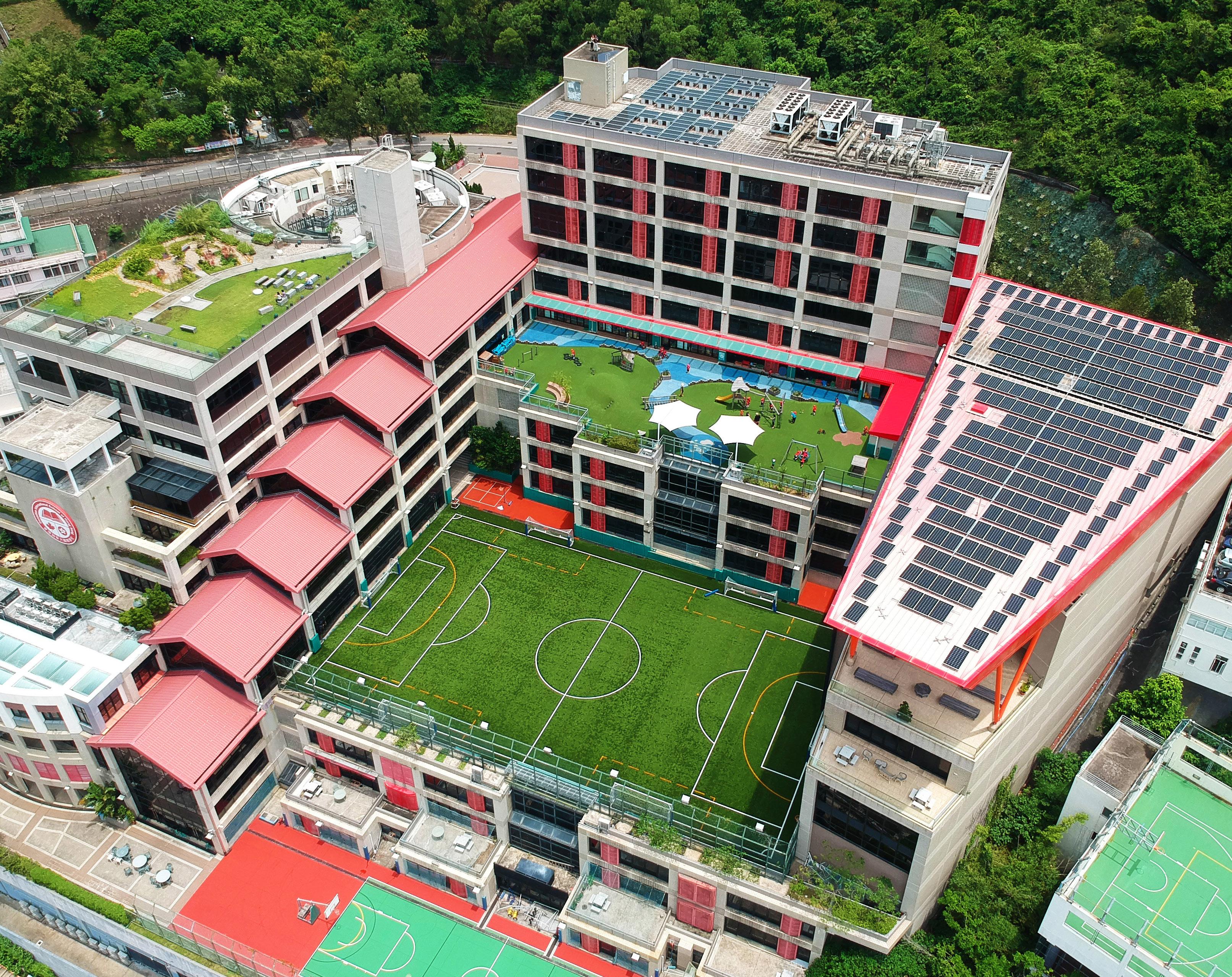
5 minute read
EDUCATION
Canadian International School of Hong Kong CDNIS introduces a new Transition Years Programme. Nicole Slater reports
Perched on the edge of Wong Chuk Hang with stunning views over the water, the Canadian International School of Hong Kong (CDNIS) is perfectly positioned to prepare its students to become citizens of the world. Since opening in 1991, the school boasts an ever-growing campus which is constantly adapting to stay ahead of the game with recent additions such as the installation of solar panels throughout and an updated Early Years Environment.
Advertisement
As students across Hong Kong acclimatise to life back in the classroom, CDNIS has a fresh offering for the new academic year with their Transition Years Programme for Grade 6’s through to Grade 8’s. Nathalie Millette, Upper School Vice Principal for the Transition Years, shares more about what we can expect from the new programme.
Transition Years Programme
This term brings with it a new middle school-like programme for Grade 6-8’s. The programme will guide students through the transition from middle to high school. “Coming
from a traditional elementary school model to high school - the school wanted to better support the unique needs of grade 6 to 8 learners. Teachers knew there was an issue, but didn’t have the framework to provide these needs,” says Millette. With specialised teachers in that age group, students can benefit from unique learning strategies and connect with their teachers on a more personal level. The Transition Years Programme also allows students to share their voice amongst the community. “In previous years the student council received no representatives from the middle school-age students, now the younger students can have a more distinct voice in the school.” Millette states along with a Transition Years Council, there will be a student newspaper and activities unique to the year group.
Fresh look
Along with the new programme, CDNIS has introduced a new space on the eighth floor for Grade 6 students. Home to a common area and surrounding lockers, students can experience a high school environment without the pressure of actually being in high school. Folding doors and whiteboard walls allow teachers to integrate classes and keep students attention through a range of teaching styles and strategies. By providing each year group with a designated floor, CDNIS allows students to bond with their peers in an independent and safe environment.
Interdisciplinary opportunities
The Transition Years Programme allows teachers to combine subjects and offer a more rounded learning experience. The interdisciplinary classes pair up English with Humanities and Science with Maths in grades 6 and 7. This strategy means fewer teachers for students to work with, more comfortable routines and the ability to adapt skills from one class to another. “The interdisciplinary classes allow students to investigate complex questions to which they don’t have a right or wrong answer, just like in real life,” says Millette.

Upper School Vice Principal Nathalie Millette

A French education
Following the Canadian system, French is now taught a year earlier from Grade 6. This gives students the opportunity to learn a third language alongside English and Mandarin from a younger age. “It’s a really great thing for the kids, 99 percent are brand new to learning French so everyone is starting out on the same level. Students need to take risks and make mistakes as part of the overall learning process. French can help them to learn this since so few have experience with this language. They start simply by learning to introduce themselves, so it is achievable for all,” says Millette. With dynamic and enthusiastic teachers, students will be able

to engage with the language in a positive way and have the opportunity to take the course as part of their higher level education.
Increased physical activity
CDNIS’s six day class cycle means that no one week looks the same and classes are not disrupted by public holidays or training days. The school has increased physical education to four hours per cycle for the transition years pupils, “there is so much research on the academic and mental health benefits of physical activity, students are able to focus more in class when they’ve been active,” states Millette. With a field,
Increased physical activities for transition years pupils
gymnasium and 25-metre heated swimming pool, the dynamic PE department more than caters to students’ sporting interests.
Best of both worlds
With 1,800 students, CDNIS is undoubtedly a big school and it is not unusual for a student to see their entire schooling on the CDNIS campus. On average, fifty percent of graduates have been enrolled since Grade 1.
Whilst the student numbers are large, it doesn’t necessarily feel like a big school. What it does feel like is a wonderful blend of its environment. The main school atrium feels a little like a Canadian mountain lodge
with its high ceilings and vast wooden beams. And the large mural by the sports pitch celebrating the CDNIS Timberwolves is undeniably North American. The Asian influence is also celebrated in the Chinese Cultural Centre, a wonderful tribute to the school’s setting and an excellent resource for Mandarin with classrooms, a library, gallery and performance area. Mandarin is taught from Early Years with French brought in at Grade 6.
Current strategic plans are well on their way to fruition so expect to hear more about further enterprising projects that propel CDNIS to soar even further ahead of the international school arena in the coming years. A school of this size and standing is rightly ambitious, operating not just from a local viewpoint but also a global one.
Canadian International School of Hong Kong is located at 36 Nam Long Shan Road, Wong Chuk Hang. cdnis.edu.hk


Music lessons at CDNIS










